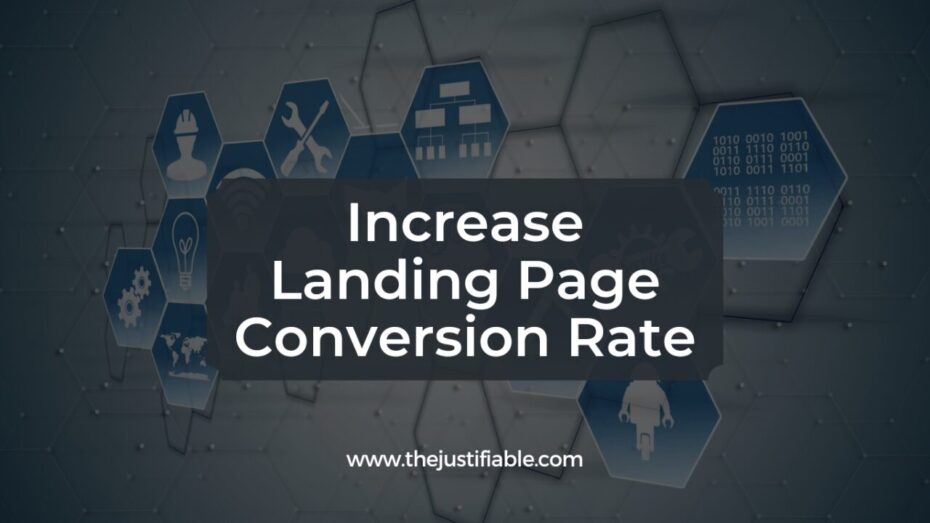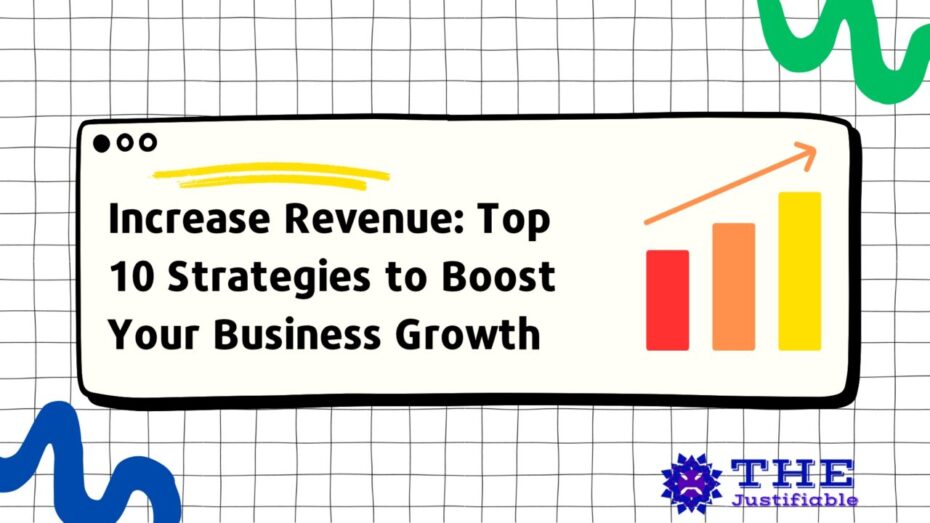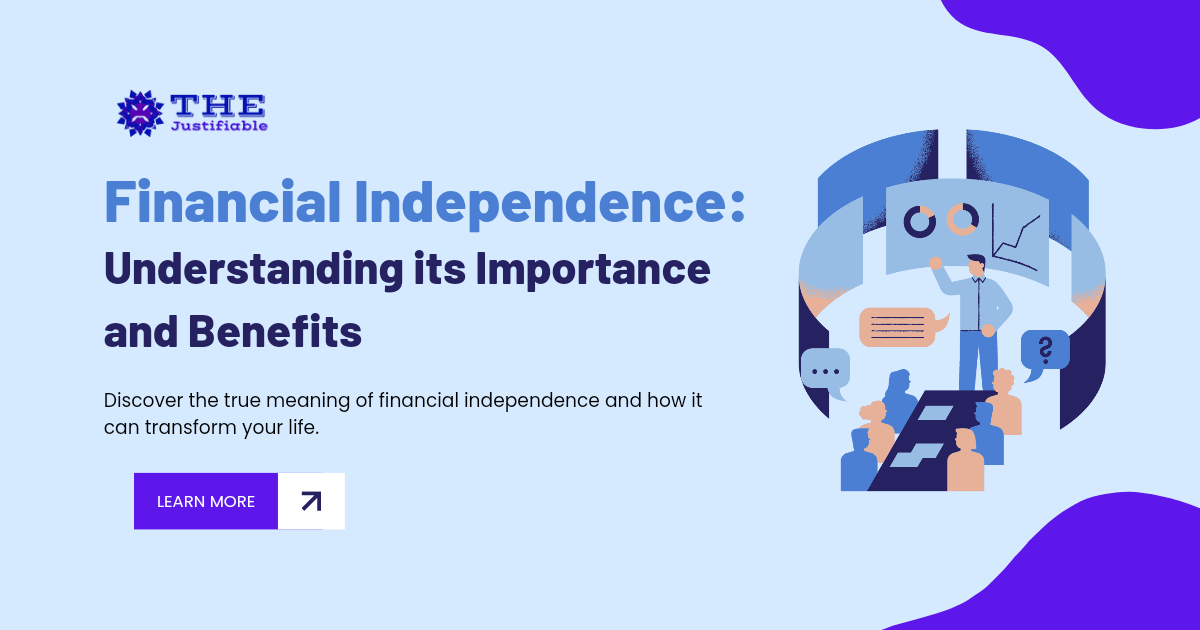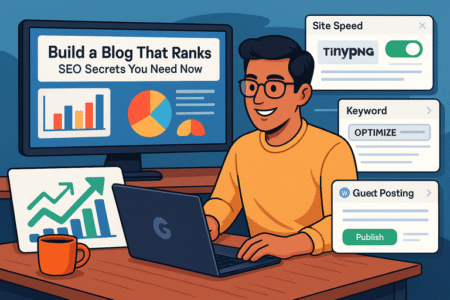Landing page conversion rate: what if I told you that the secret to significantly increasing it lies within your grasp? How do we design landing pages that not only attract but convert? And most importantly, what are the key factors that can transform your landing page from being just another webpage to a conversion powerhouse?
My intention is to dive into these questions, providing you with insights and strategies that can elevate your landing page’s performance to new heights. I strongly believe that by following these guidelines, you can significantly boost your landing page’s effectiveness, driving better results for your business.
Table of Contents
Mastering the Fundamentals of Landing Page Design for Higher Conversion Rates
How can simple design principles dramatically improve your landing page conversion rate? In my view, mastering the fundamentals of landing page design is not just about creating aesthetically pleasing pages; it’s about constructing a strategic pathway that guides visitors towards making a decision.
From my perspective, effective design marries form and function, ensuring that every element serves a purpose towards increasing conversions.
Firstly, understanding the importance of layout, color scheme, and typography is crucial. These elements must work in harmony to create a visually appealing and intuitive user experience.
I strongly believe that a well-thought-out design can significantly reduce bounce rates and encourage visitors to take action. My advice? Focus on simplicity and clarity. A clutter-free page with a clear value proposition can work wonders in elevating your landing page conversion rate.
Moreover, the strategic placement of calls-to-action (CTAs) cannot be overstated. From my point of view, CTAs are the gateway to higher conversion rates. They should be bold, clear, and compelling, placed in positions where they naturally draw the visitor’s eye.
According to best practices, incorporating contrasting colors for your CTAs can make them stand out and prompt action more effectively. My recommendation is to experiment with different placements and styles to find what works best for your audience.
The Role of Visual Hierarchy in Enhancing Landing Page Conversion Rate
Why is visual hierarchy a game-changer for landing page conversion rates? From my perspective, visual hierarchy organizes content in a way that aligns with how we naturally scan a page. It prioritizes key elements, making it effortless for visitors to understand the most important information first.
I believe that by mastering visual hierarchy, you can guide visitors’ attention to where it matters most, significantly boosting your conversion rates.
Implementing visual hierarchy effectively means using size, color, and layout to emphasize your landing page’s main message and call to action. In my estimation, the headline should be the most prominent feature, immediately followed by supportive visuals or text that reinforce the message.
My suggestion is to use contrasting colors and larger fonts for the elements you want to highlight, ensuring they capture the visitor’s attention first.
In addition, the strategic use of whitespace is vital in creating a clear visual hierarchy. It seems to me that ample spacing around key elements not only improves readability but also emphasizes the importance of specific content.
My advice is to use whitespace as a tool to direct the user’s focus towards your primary call to action, making the path to conversion as straightforward as possible.
Implementing User Feedback for Unstoppable Landing Page Improvements
How can user feedback transform your landing page into a conversion powerhouse? I’m of the mind that user feedback is an invaluable resource for continuous improvement. It offers direct insights into the user experience, highlighting what works and what doesn’t.
From my point of view, leveraging this feedback can lead to unstoppable improvements in your landing page’s effectiveness.
One would think that gathering and analyzing feedback might be complex, but it can be as simple as conducting surveys, analyzing user behavior through heat maps, or even direct user testing.
My recommendation is to actively seek out feedback and be open to making changes based on what you learn. It seems to me that this iterative process is crucial for refining your landing page design and content to better meet your audience’s needs.
Lastly, implementing changes based on user feedback should be done with the goal of enhancing user experience and conversion rates. My impression is that even small tweaks, informed by real user experiences, can lead to significant improvements in performance.
From my experience, continuously optimizing your landing page based on user feedback is a surefire way to keep your conversion rates on an upward trajectory. My advice is to make this process a regular part of your landing page strategy, ensuring your page remains as effective as possible in converting visitors.
Leveraging Psychology to Skyrocket Landing Page Conversion Rates
Did you know that psychological triggers can significantly influence consumer behavior? Understanding and applying these triggers in landing page design can lead to a remarkable increase in conversion rates.
From my perspective, leveraging psychology is not about manipulation; it’s about creating a more intuitive and engaging user experience. By tapping into the underlying principles of how people make decisions, we can design landing pages that resonate more deeply with our audience.
Firstly, the principle of scarcity is incredibly powerful. It seems to me that when we believe an offer is limited in time or availability, we’re more inclined to act quickly to not miss out.
I recommend using this principle judiciously by highlighting limited-time offers or exclusive bonuses on your landing page. This approach can create a sense of urgency that encourages visitors to convert before it’s too late.
Moreover, the concept of social proof can dramatically enhance trust and credibility. I couldn’t agree more with the notion that we look to others for guidance, especially when we’re uncertain.
Including testimonials, customer reviews, and trust badges on your landing page can significantly influence decision-making. From my point of view, these elements reassure visitors that others have had positive experiences with your product or service, making them more likely to convert themselves.
The Power of Color Psychology in Landing Page Optimization
Color is not just a matter of aesthetics; it’s a powerful psychological tool that can impact mood, feelings, and behaviors. Did you know that certain colors can actually increase conversion rates?
For instance, blue evokes trust and security, often used by banks and businesses to build customer confidence. My advice is to carefully choose your landing page’s color scheme to align with the emotional response you want to elicit from your visitors.
Understanding the associations of different colors can guide you in making informed design decisions. Red, for example, is often associated with urgency and can be used to draw attention to important elements like CTAs.
However, it’s important to use it sparingly to avoid overwhelming your visitors. My suggestion is to test different color combinations to see what resonates best with your audience, keeping in mind the overall feeling you wish to convey.
Additionally, the contrast between colors can significantly affect readability and focus. I am of the view that high contrast between text and background makes your content more accessible and easier to read, directing visitors’ attention to key messages and actions.
In my estimation, utilizing color contrast effectively can guide visitors through your landing page more smoothly, leading to higher conversion rates.
Crafting Compelling Calls-to-Action That Drive Conversions
A call-to-action (CTA) is more than just a button on your landing page; it’s the culmination of your visitors’ journey, the point at which they decide to take action. Crafting a compelling CTA requires an understanding of what motivates your audience.
In my opinion, a CTA should be clear, concise, and convey a sense of value. What will your visitors gain by clicking? Emphasize the benefit in your CTA text to make it irresistible.
The placement of your CTA also plays a crucial role in conversion. It seems to me that placing CTAs both above and below the fold ensures they are accessible wherever your visitors are on the page.
However, my recommendation is to perform A/B testing to find the optimal placement for your specific audience. Remember, the goal is to make the path to conversion as straightforward as possible.
Lastly, the design of your CTA button matters significantly. It should stand out from the rest of the page but still fit within the overall design scheme. I strongly believe that a well-designed CTA button can draw the eye and encourage clicks.
Experiment with different shapes, sizes, and colors to find what works best, but always ensure that it remains clickable and looks enticing on all devices. In my view, a well-crafted CTA is the linchpin of a successful landing page, turning
Advanced Strategies for Maximizing Landing Page Conversion Rates
Just as a seasoned chef uses a variety of refined techniques to perfect a dish, so too can marketers apply advanced strategies to fine-tune their landing pages for maximum conversion rates.
The art of increasing landing page conversion rates goes beyond basic design and content; it involves leveraging sophisticated tactics that can significantly amplify your results. From my perspective, understanding and implementing these strategies can be the difference between a good landing page and a great one.
Firstly, personalization is key. In my view, landing pages that speak directly to the visitor’s needs and interests are far more compelling than generic ones. By using data to personalize content, offers, and messages, you can significantly increase the relevance of your landing page for each visitor.
This targeted approach can lead to higher engagement and conversion rates. My recommendation is to explore dynamic content that changes based on the visitor’s past behavior or demographic information.
Moreover, optimizing the user journey on your landing page is crucial. It seems to me that the smoother and more intuitive the journey from landing to conversion, the higher the likelihood of success. This means eliminating unnecessary steps, clarifying the value proposition, and simplifying forms.
According to best practices, every element on your page should guide the visitor towards the desired action. My advice is to constantly evaluate and refine the user journey to remove any friction points that could deter conversions.
A/B Testing: The Key to Unmatched Landing Page Performance
Imagine if you could peek into the future to see which version of your landing page performs better before fully committing to it. A/B testing allows you to do just that. By comparing two versions of a page, you can determine which elements contribute most significantly to your conversion goals. From my experience, A/B testing is an essential tool for any marketer looking to optimize their landing page performance.
In conducting A/B tests, my advice is to change one element at a time, such as the headline, CTA button color, or page layout. This approach helps pinpoint exactly what influences the conversion rates.
According to data-driven marketing principles, making decisions based on A/B test results can lead to significant improvements in landing page effectiveness. I strongly believe in the power of A/B testing as a method to refine and perfect your landing page design and content strategy systematically.
Moreover, it’s important to test continuously. The digital landscape and user expectations are always evolving, so a landing page that performs well today may not do so tomorrow. My recommendation is to adopt a culture of ongoing optimization.
This means regularly reviewing test results, implementing changes based on findings, and then testing anew. From my perspective, A/B testing is not just a strategy; it’s a continuous cycle of improvement.
The Impact of Page Speed on Your Landing Page Conversion Rates
In the digital age, speed is everything. A slow-loading landing page can be the Achilles’ heel of your conversion rate efforts. Did you know that even a one-second delay in page load time can lead to a significant drop in conversions? This fact underscores the critical importance of optimizing page speed for maintaining visitor interest and maximizing conversion opportunities.
Page speed optimization should be a priority in your landing page strategy. From my point of view, every second counts when it comes to keeping potential customers engaged. This means compressing images, leveraging browser caching, and minimizing the use of heavy scripts that can slow down page load times.
My advice is to use tools like Google’s PageSpeed Insights to identify specific areas for improvement and track the impact of changes on your page’s performance.
Furthermore, the mobile experience cannot be ignored. With an increasing number of users accessing websites from mobile devices, a fast-loading mobile landing page is crucial for capturing this audience. I believe that optimizing for mobile speed involves not just technical adjustments but also considering the mobile user’s context and needs.
My suggestion is to prioritize mobile optimization as part of your overall strategy to improve landing page conversion rates, ensuring a seamless and fast experience for all visitors, regardless of device.
Harnessing the Power of Content to Elevate Landing Page Conversion Rates
It’s no secret that in the vast sea of digital content, standing out can be a challenge. Yet, the power of well-crafted content in elevating landing page conversion rates cannot be overstated. In my opinion, engaging and persuasive content is the backbone of a successful landing page.
It’s what captivates visitors, communicates value, and ultimately, convinces them to take action. From my point of view, mastering content creation is not just about writing well; it’s about understanding your audience deeply and delivering the messages that resonate most with their needs and desires.
To harness the power of content effectively, it’s essential to focus on clarity and relevance. Every word on your landing page should serve a purpose, whether it’s to educate, persuade, or reassure your visitors.
I strongly believe that clear and concise content can significantly improve the user experience and guide visitors towards making a conversion. My advice is to always keep your audience in mind when crafting your message, ensuring it speaks directly to their pain points and aspirations.
Moreover, storytelling can be a powerful tool in your content arsenal. I would say that stories have the unique ability to connect on an emotional level, making your offer more relatable and memorable.
Incorporating elements of storytelling into your landing page content—such as customer testimonials or use cases—can help paint a vivid picture of the benefits your product or service offers. In my estimation, storytelling not only enriches the content but also helps build a stronger relationship with your audience.
How to Write Persuasive Copy That Converts Visitors into Customers
Writing persuasive copy is an art form that combines psychology, creativity, and strategy. It’s about crafting messages that resonate, compel, and ultimately, convert. From my perspective, the key to persuasive copy lies in understanding your audience’s needs and how your product or service can fulfill them. Speaking personally, I believe that a deep empathy for your audience is the foundation of any effective copywriting strategy.
To write a persuasive copy, start with a compelling headline. It’s the first thing visitors see, and it sets the tone for their entire experience on your landing page. I recommend making your headline clear, benefit-focused, and intriguing enough to encourage further reading.
Following the headline, your subheadings and body copy should reinforce the value proposition, addressing common objections and highlighting key benefits. My advice is to use active voice and powerful action verbs to create a sense of urgency and excitement.
Furthermore, incorporating elements of persuasion such as social proof, authority, and scarcity can significantly enhance the effectiveness of your copy. According to principles of persuasion, people are more likely to take action when they see others doing the same, perceive an authority endorsing your product, or fear missing out on a limited offer.
In my opinion, tactfully integrating these elements into your copy can dramatically boost your conversion rates.
Utilizing Social Proof to Build Trust and Boost Conversion Rates
Social proof is a powerful psychological phenomenon where people conform to the actions of others under the assumption that those actions reflect the correct behavior. In the context of landing pages, social proof can significantly build trust and credibility, essential factors in boosting conversion rates.
From my perspective, displaying testimonials, reviews, and endorsements prominently on your landing page can have a profound impact on visitors’ decision-making processes.
Testimonials from satisfied customers, endorsements from well-known industry figures, and case studies demonstrating the success of your product or service are all effective forms of social proof. I suggest selecting testimonials that speak directly to the concerns and desires of your target audience, making them as relatable and authentic as possible.
According to my experience, genuine testimonials that highlight specific benefits can resonate more deeply with potential customers.
Additionally, showcasing any awards, certifications, or media mentions can further enhance your landing page’s credibility. From my point of view, these accolades serve as external validation of your product’s value and your company’s integrity.
My recommendation is to strategically place these elements where they naturally support your message and encourage conversion.
Optimizing for Mobile: A Crucial Step to Increase Landing Page Conversion Rates
Surprisingly, a significant number of businesses still overlook the importance of mobile optimization for their landing pages. In today’s fast-paced digital world, where over half of web traffic comes from mobile devices, optimizing your landing page for mobile is not just an option; it’s a necessity.
From my point of view, ensuring your landing page is mobile-friendly is one of the most straightforward yet impactful ways to boost your conversion rates. This approach acknowledges the growing preference for mobile browsing and shopping, catering to the needs of a vast and still-expanding audience.
Firstly, a mobile-optimized landing page offers a better user experience. I think it’s essential to understand that mobile users have different needs and limitations compared to desktop users. This includes smaller screens and touch-based navigation.
Therefore, my recommendation is to prioritize simplicity and speed in your mobile design. A clean, straightforward layout with large, easy-to-tap buttons and concise, compelling content can dramatically improve usability and engagement on mobile devices.
Moreover, mobile optimization can significantly enhance your SEO efforts. Google prioritizes mobile-friendly websites in its search results, which means optimizing your landing page for mobile can also increase your visibility.
From my perspective, this dual benefit of improved user experience and enhanced SEO makes mobile optimization a key strategy for any digital marketer looking to increase landing page conversion rates. My advice is to use responsive design techniques to ensure your landing page looks great and functions well on any device.
Designing Mobile-Friendly Landing Pages for Higher Engagement
Creating a mobile-friendly landing page goes beyond shrinking content to fit smaller screens. It involves designing an experience that is both visually appealing and functionally seamless for mobile users.
I strongly believe that the key to high engagement on mobile is to focus on the core message and call-to-action, eliminating any unnecessary elements that can distract or frustrate users. According to my experience, streamlined content paired with clear, concise CTAs can significantly increase the likelihood of conversion.
It’s important to consider the mobile user’s journey from start to finish. This means paying close attention to factors like navigation ease, touch interactions, and form simplicity. My suggestion is to implement a single-column layout that scrolls naturally, use large, legible fonts, and ensure that all interactive elements are easily clickable with a thumb.
From my point of view, these design choices can make a huge difference in the overall effectiveness of your mobile landing page.
Additionally, optimizing images and multimedia content for mobile is crucial. Large images or videos can slow down your page load time, negatively affecting user experience and potentially costing you conversions.
I recommend compressing images and using mobile-optimized media formats to keep your site speedy and responsive. My impression is that users are far more likely to engage with content that loads quickly and displays correctly on their device, underscoring the importance of technical optimization in mobile-friendly design.
The Importance of Mobile Speed in Landing Page Conversion Success
The speed of your mobile landing page can make or break your conversion rate. In an era where attention spans are shorter than ever, even a few seconds of delay can lead users to abandon your page before it even loads.
Optimizing for mobile speed is not just a technical necessity; it’s a critical component of providing a positive user experience. From my estimation, faster loading times lead to higher satisfaction, lower bounce rates, and, ultimately, more conversions.
To improve mobile page speed, start by assessing your current performance with tools like Google’s PageSpeed Insights. These tools can offer specific recommendations for improvement, such as minimizing code, leveraging browser caching, and optimizing images.
My recommendation is to take these suggestions seriously and implement changes that can have a significant impact on your page’s loading speed.
Lastly, consider the role of your hosting solution and content delivery network (CDN) in mobile speed. A reliable, high-performance hosting service and a well-configured CDN can dramatically reduce load times for users around the world.
I believe that investing in these technologies is investing in the success of your landing page. From my point of view, when it comes to mobile optimization, speed is not just a luxury; it’s a necessity that can dictate the success of your online marketing efforts.
frequently asked questions (FAQs)
What is a landing page conversion rate?
The conversion rate is the percentage of visitors who complete a desired action, such as filling out a form or making a purchase, on a landing page.
Why is the conversion rate important?
It measures the effectiveness of your landing page in converting visitors into leads or customers, impacting your overall business performance.
How can I improve my landing page conversion rate?
Optimize design, create compelling calls-to-action, use social proof, ensure fast loading times, and implement A/B testing.
What role does design play in landing page conversion?
A clean, visually appealing design with a clear value proposition and strategic placement of elements like CTAs can enhance user experience and conversions.
How can A/B testing help my landing page?
A/B testing allows you to compare different versions of your landing page to see which elements drive higher conversions.
What is the significance of mobile optimization for landing pages?
With increasing mobile traffic, ensuring your landing page is mobile-friendly can significantly improve user experience and conversion rates.
How does page speed affect conversion rates?
Faster loading times lead to lower bounce rates and higher user satisfaction, directly impacting conversion rates.
What is the impact of social proof on landing pages?
Displaying testimonials, reviews, and endorsements builds trust and credibility, encouraging more visitors to convert.
What are some effective call-to-action (CTA) strategies?
Use clear, concise language, make the CTA visually prominent, and emphasize the value or benefit of taking action.
How can user feedback improve landing page performance?
Gathering and analyzing user feedback helps identify pain points and areas for improvement, leading to better user experience and higher conversion rates.






